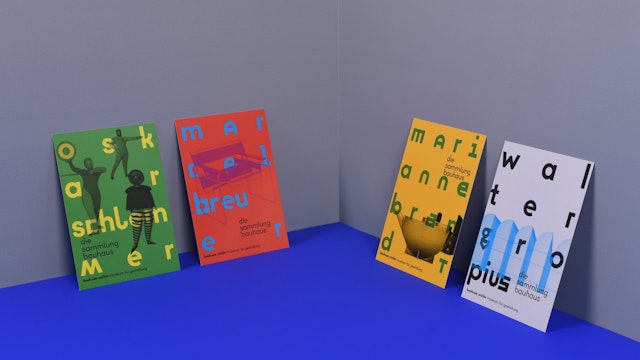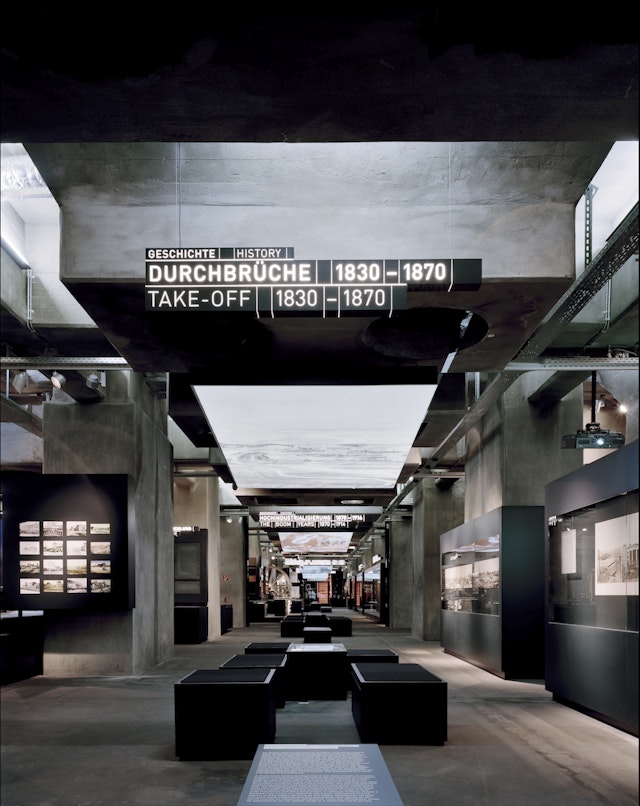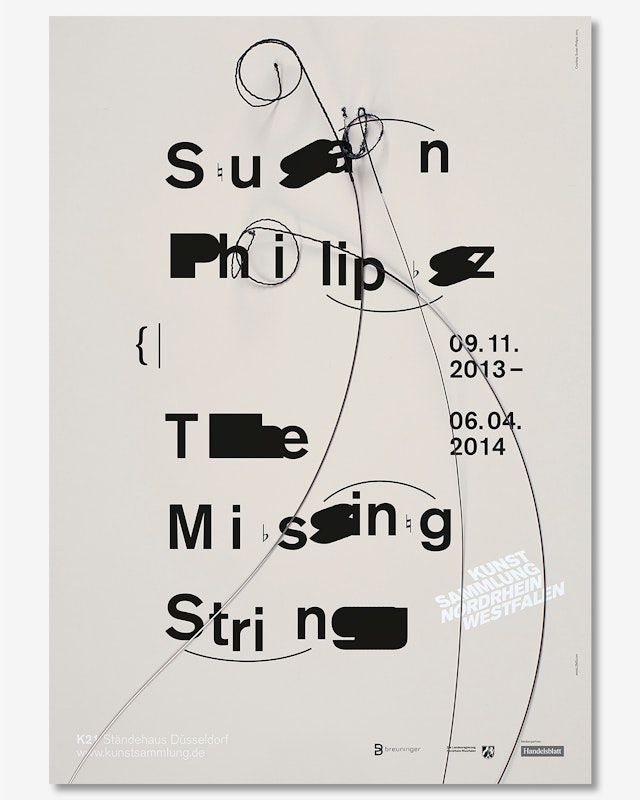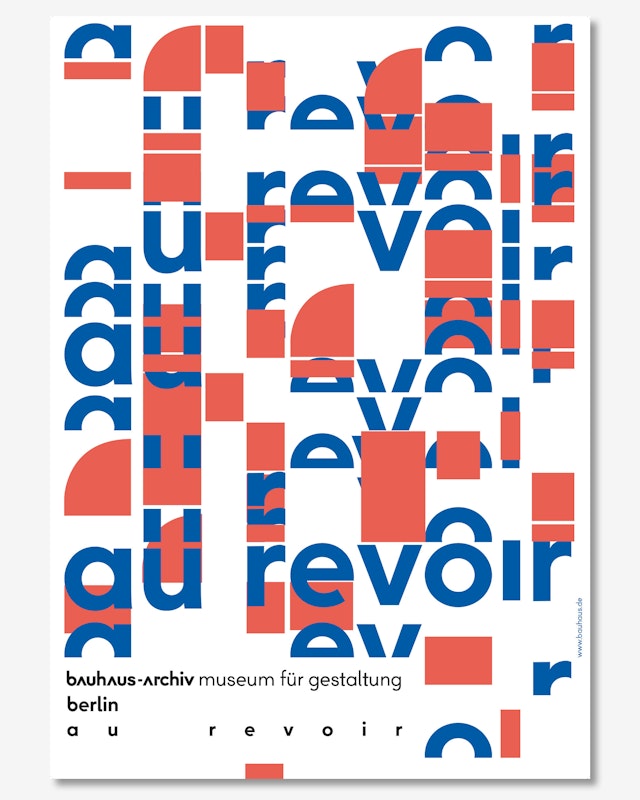An Interview with Sascha Lobe, Pentagram's Newest Partner
Commentary — Jul 24, 2018By Rachael Steven for Creative Review

This interview originally appeared online in Creative Review, 3rd July 2018.
Sascha Lobe is the second designer to become a partner at Pentagram’s London studio this year. (MAP Project Office co-founder Jon Marshall joined in April.)
Lobe’s background combines graphics, architecture and 3D design: he founded communications studio L2M3 in 1999 and has worked on exhibition graphics, identity projects and signage for some of the world’s best-known brands and cultural institutions.
In 2014, Lobe and his team took on the coveted task of designing the first corporate identity for the Bauhaus-Archiv Museum in Berlin, creating a custom typeface that brings together elements of various designs from the archive. He recently collaborated with David Chipperfield Architects to create the signage and way finding for Korean beauty brand Amorepacific’s new 30-storey HQ in Seoul and has also worked with Mercedes Benz and Adidas as well as the Kunsthaus in Zürich and Luxembourg’s National Library.

Some of Lobe’s team will join him in London while others will remain in Stuttgart. He will also be recruiting new team members in London. He plans to continue working with German clients at Pentagram, as well as taking on new projects in the UK and other markets.
Joining a company after running an independent practice is a major change – even more so when that studio is in a different country. Becoming a Partner at Pentagram also brings with it a certain amount of risk: Partners take on a share of overheads and have to meet profit expectations. Lobe admits it is “a big change” but says he is excited about the prospect of working under the Pentagram name.
“I don’t know any other design studio which has such a long history and still seems to be up to date. I think it has such a gravity. That’s something I wanted [to be a part of], and I think I’m experienced enough now to grab such opportunities,” he says.
Lobe has picked an interesting time to move to London. We are still none the wiser as to what Brexit will mean for the city’s creative and business communities, but he is optimistic about the capital’s future as a creative hub.
“Of course [Brexit] is an issue because nobody knows what will happen in detail – up until now it was no problem to relocate here and now, I don’t know exactly – but Pentagram is international and my clients are international,” he adds.

“When you’re living here, you often don’t realise how big the opportunities are because it’s your normal daily life. But there’s such a huge amount of talent [in London]. When it comes to the creative community, Berlin might be seen as a little bit cooler now, but London is still a hub. That’s one of the reasons I [wanted to move here] – as a designer, you want to be inspired, not only by the city but by other people and other designers, and I hope to find that here.”
Lobe has been in discussion with Pentagram for several months. Becoming a Partner is a long process, one that involves meeting each of the existing Partners who must all give their consent before a formal invitation is extended. Paula Scher was the first to ask Lobe if he’d ever considered becoming a Partner – a question that he says was completely unexpected.
“I was very focused on my own studio … so when Pentagram first knocked on my door and asked if I could come for a talk … and [after the talk], Paula Scher asked me, ‘could you ever imagine becoming a Pentagram partner?’, it was a big surprise.
“But I have to say I immediately understood what that means for me. Pentagram is like a big umbrella. You have different voices underneath that umbrella and I think my voice or my vision can easily go under that without being touched too much,” he continues. “We talked for a long time [about the partnership], because it’s a big step and it’s not so easy to relocate a studio, so for that reason the final solution is that the Stuttgart studio will still exist. That will be a hub for me in Germany and we will continue to collaborate and then a few of my staff will come here, and I think that’s a very good construction.”

Lobe describes himself as “a classic graphic designer” with “very strong connections to 3D design, interiors and architecture” – and he believes this varied experience will stand him in good stead at Pentagram.
“There are other Partners doing signage for example, but I think that maybe the combination of talents and things I did in the last few years has a very good position here,” he explains. “I’m very into signage and font design and of course that’s also a trend. We started designing fonts for certain corporate design programmes like the Bauhaus Archiv in Berlin and over the last two to three years … I never would have called myself a font designer but [once you do it], you start you think ‘hey, there are interesting options and possibilities here’, so a new path opened for me.”
Lobe’s route into graphic design was an unusual one. He started out studying electrical engineering but soon became fed up with maths and physics. He considered becoming an architect, but was put off by the technical nature of the job and the fact that some architects will work on just a handful of projects in their lifetime. Graphic design allowed him to combine technical expertise with creative thinking and working at a faster pace.

His studio started out with a focus on exhibition graphics – in part because of Lobe’s interest in architecture – and has since evolved to offer a range of services from type design through to corporate identities. There are elements of minimalism in his work, but he insists he is more concerned with creating flexible “visual master plans” that can work across various media than devising rigid systems.
“If you look at my work from a stylistic perspective then of course it’s very often minimalist and it’s quite grid-orientated but that’s not the point. Grids aren’t so important anymore,” he says. “If you compare [graphic design] to spoken language, of course you have to establish rules, but if you are a poet you will often break those rules or have other ideas. I think at the moment that’s the point we’re at [in graphic design] – we should push graphic design a little more into the direction of art without being selfish like an artist might be.”
As a graphic designer, he sees his work as a balance between “creating” and “translating” – a balance between translating a client’s vision or objective while also adding some more artistic flourishes. “I think that’s what all of graphic design is about but [not everyone does it]. On one hand, there are many people who try to be only creators and others are only trying to translate – to make something beautiful or understandable or readable – and other people are thinking about graphic design like art. They’re thinking ‘I should be a star’,” he adds.
“For me, it’s much more about the context of each project. Parts of it are translating things or expressing ideas that are already there but not in a visual form. On the other hand, I really enjoy doing things which are context free, so I can do what I want and what I think is a good visual statement, and I think that balance is in every project I’ve done so far. Sometimes it might be a little more about creating or about translating … but if you don’t get that balance, your project will not be good. You might get famous, but that doesn’t necessarily mean the project did what it should have done.”

Lobe brings with him considerable experience in working with cultural clients and established brands in Dusseldorf, Berlin and Stuttgart. His appointment could perhaps be an indication of Pentagram’s desire to build stronger links with other countries in the EU ahead of the UK’s departure from the EU.
Lobe also has strong leadership experience – something that is central to Pentagram’s model. While other studios might be moving towards more collaborative and less leadership-driven ways of working, Pentagram continues to be based on multidisciplinary teams working under the guidance of one designer. Lobe is a firm believer that there should always be someone responsible for heading up and shaping the direction of a project. At L2M3, he says he has tried to foster a positive, collaborative working environment while still being a “leader”.
“I’m very much convinced that in the end, there’s always one person who has to be responsible for [a project],” he says. “I think it helps if there is someone who now knows why he is doing something a certain way and he can explain that.”
“Look at Pentagram – the Partners are more experienced than all of the other team members. It has to be a good combination of new ideas, new energy and new experience, but I think that leadership has to be there,” he adds.


The announcement of Jon Marshall’s appointment to Partner seemed like a return to Pentagram’s roots. The studio’s founding partners specialised in architecture, graphics and industrial design but in recent years, it had become best known for its branding work. Marshall brings an industrial design background and expertise in crafting both products and user experiences for big brands and startups (Map worked with IBM and Google as well as startups Kano and BleepBleeps).
Like Marshall, Lobe has experience in working across a range of media for a diverse set of clients and his type design expertise will surely be in demand as more and more brands look to commission their own fonts.
His appointment to Partner also appears to be another step towards building a more multidisciplinary offering. The work that large design studios are asked to carry out is becoming increasingly diverse – spanning product and 3D design as well as traditional branding and communications – and with the appointment of Lobe and Marshall, Pentagram has certainly strengthened its expertise in these areas. Pentagram is not alone in looking to broaden its design skills – AKQA recently acquired a majority stake in both MAP Project Office and Universal Design Studio, a move that AKQA CEO Ajaz Ahmed told CR will allow Map, AKQA and UDS to work on “collaborative projects that have just one client team”.

Over the past few years, Pentagram has been building a more diverse workforce by bringing in non-white and women Partners. The appointment of Lobe and Marshall might seem counter to that, but Pentagram has confirmed that its next Partner (who will be announced in September) is a woman. What Marshall and Lobe do bring is diversity in terms of their design skills, background and experiences.
“I think Pentagram is in a phase where we have to look to the future, and I sensed that when we talked about a possible partnership. There are huge opportunities for me here,” adds Lobe.
“Pentagram has a strong position – also through its history – in today’s graphic design business, but it has to adapt to future challenges. The world around us is constantly changing and graphic design as a language [is changing] too. That’s where new Partners come in. We are responsible for innovations and changes, we shape the new Pentagram.”

You can read our interview with Jon Marshall here